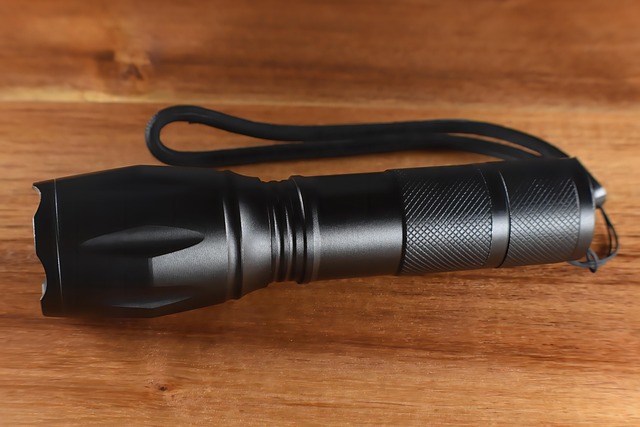Electric cars have transformed the way we think about propulsion, shifting the focus from internal combustion to electric motors and battery systems. While the absence of a traditional engine eliminates many mechanical inefficiencies, it also introduces a new set of variables that influence performance. From battery chemistry and thermal management to motor control algorithms and regenerative braking, every component plays a role in how a vehicle accelerates, climbs hills, and recovers energy. Service technicians and parts suppliers therefore need to adopt a holistic view of performance optimization, balancing power output, range, longevity, and safety. This article explores the most effective strategies for improving the performance of electric car engines through thoughtful service, parts selection, and emerging technologies.
Understanding the Core Elements of Electric Performance
Performance optimization in electric vehicles hinges on three foundational pillars: battery pack health, motor efficiency, and energy recovery systems. The battery pack supplies the electrical energy that powers the motor; its capacity, state of charge, and temperature directly affect available power and range. The motor’s design—whether a permanent‑magnet induction or a switched‑reluctance variant—determines how efficiently it converts electrical energy into mechanical torque. Finally, regenerative braking systems convert kinetic energy back into stored charge, reducing overall energy consumption. By systematically evaluating and tuning each pillar, technicians can unlock significant gains in acceleration, top speed, and mileage.
Battery Pack Maintenance for Peak Performance
Battery packs are the heart of electric propulsion, and their performance degrades with age, temperature extremes, and usage patterns. Regular diagnostic scans that measure cell voltage, impedance, and temperature gradients allow service centers to identify imbalances before they lead to failures. Rebalancing techniques—such as controlled charging cycles—can restore uniformity across cells, extending pack life. Thermal management is equally critical: installing advanced heat exchangers or phase‑change materials can keep cells within the optimal 20–30°C window, preventing both overheating and cold‑induced losses. Consistent monitoring and proactive maintenance translate directly into higher available power and a more reliable range.
Motor Tuning for Enhanced Torque Delivery
Electric motors achieve peak efficiency when driven within a specific speed‑torque envelope. Software updates that adjust the inverter’s switching frequency, voltage limits, and current profiles can shift this envelope to match driver preferences or environmental demands. For instance, a performance‑centric update might widen the low‑speed torque band for aggressive acceleration, while a range‑optimized version could compress the envelope to favor smoother, lower‑power operation. Additionally, swapping out motor components—such as high‑flux permanent magnets or advanced windings—can improve magnetic flux density and reduce copper losses. These hardware upgrades, combined with firmware refinement, yield measurable gains in both acceleration and efficiency.
Regenerative Braking: Turning Stops into Energy
Regenerative braking is a signature feature of electric cars, turning deceleration into usable energy. Optimizing this system involves fine‑tuning the braking torque curves, adjusting the ratio between regenerative and friction brakes, and calibrating sensor inputs for accurate speed and load estimation. By configuring a higher regenerative percentage in low‑speed, city driving scenarios, technicians can recover a larger fraction of kinetic energy, thereby extending range. In contrast, performance‑focused vehicles may reduce regeneration to preserve low‑speed responsiveness. Proper calibration ensures that the system remains safe, comfortable, and efficient across all operating conditions.
Software Updates: The Invisible Upgrade Path
Modern electric cars are increasingly software‑centric, with over‑the‑air updates delivering new features and performance tweaks. Engineers can refine controller firmware to optimize current flow, reduce electromagnetic interference, and improve thermal management. Updates that recalibrate the vehicle dynamics control unit can alter traction, stability, and torque distribution, enhancing on‑road behavior. Furthermore, real‑time telemetry allows manufacturers to identify common degradation patterns, prompting targeted service interventions. Because software changes are non‑intrusive, they represent a cost‑effective method of performance optimization, offering benefits comparable to physical modifications.
Selecting High‑Quality Parts for Longevity and Power
When replacing components—whether battery cells, motor housings, or cooling fans—service technicians should prioritize parts that meet or exceed OEM specifications. Supplier certifications, material purity, and proven thermal conductivity are key indicators of quality. For example, using lithium‑ion cells with high energy density and low internal resistance can increase both range and power output. Similarly, selecting brushless DC motors with precision‑machined windings reduces eddy current losses. Proper installation and alignment also play a critical role; misaligned shafts or poorly sealed cooling ducts can negate the advantages of premium parts.
Thermal Management Upgrades
Efficient cooling is essential for maintaining performance over the lifespan of an electric vehicle. Upgraded coolant flow paths, larger heat exchangers, or active liquid‑to‑air systems can dissipate heat more effectively, allowing higher power densities without overheating. For high‑performance models, adding a secondary cooling loop dedicated to the motor can reduce back‑EMF losses, thereby improving torque. Integrating smart sensors that monitor temperature in real time enables dynamic adjustment of fan speeds, balancing cooling demand with energy consumption. Such upgrades provide a tangible performance boost while preserving component integrity.
Emerging Technologies Shaping the Future of Performance
Industry trends suggest a shift toward lighter, more conductive materials and advanced power electronics. Silicon carbide inverters can operate at higher voltages and frequencies with reduced losses, enabling faster acceleration. Carbon‑fiber motor housings lower rotational inertia, improving torque response. Solid‑state battery chemistries promise higher energy density and faster charging, directly translating into increased range and performance. As these technologies mature, service shops will need to adapt their diagnostic tools and part inventories, ensuring that vehicles continue to benefit from the latest performance‑optimizing innovations.
Preparing for Next‑Generation Service Requirements
Future vehicles will require technicians skilled in both traditional mechanical repairs and cutting‑edge electronics. Training programs that cover power electronics diagnostics, high‑voltage safety, and software configuration will become essential. Additionally, integrating modular service platforms—where components can be swapped with minimal downtime—will reduce service intervals and keep vehicles at peak performance longer. Investment in diagnostic rigs capable of measuring impedance, temperature gradients, and torque curves will give service centers a competitive edge in offering comprehensive performance optimization packages.
Conclusion: A Continuous Journey Toward Superior Performance
Performance optimization in electric cars is an ongoing process that blends meticulous maintenance, thoughtful part selection, and intelligent software management. By routinely inspecting battery health, fine‑tuning motor control, calibrating regenerative braking, and adopting high‑quality components, technicians can extract the maximum power and efficiency from each vehicle. As the electric vehicle landscape evolves, staying abreast of emerging materials, power electronics, and service methodologies will ensure that both service centers and drivers reap the full benefits of performance optimization. The result is a driving experience that delivers blistering acceleration, extended range, and uncompromised safety, all while paving the way for a cleaner, more sustainable transportation future.




